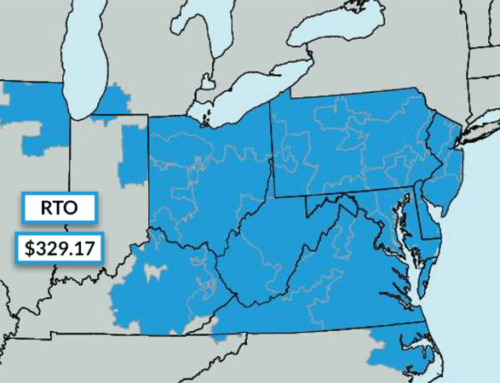Technological innovation continues to shape the energy industry. As emerging technologies such as smart grids, building automation systems, battery storage, and renewable energy continue to grow, the electric system is becoming cleaner and more resilient. In this article, we will explore key technological energy trends, challenges with integrating new technology into the grid, and the impact on energy customers and brokers alike.
How Technology Has Affected The Energy Industry
Technology has had a great impact on the aging electrical infrastructure. From the introduction of smart meters and automation to microgrid technology, the industry is moving quickly away from analog systems. Many of these technological enhancements have allowed for new energy advancements. For example, the introduction of smart meters and net-metering devices has allowed for widespread adoption of behind-the-meter solar. Furthermore, at the wholesale market level, grid operators are utilizing battery storage systems to balance voltage and support the ancillary services markets. This advancement have proven to be beneficial to utilities and consumers and will continue to create a more reliable energy network.
The Key Emerging Energy Technologies In 2025 And Beyond
As we move into the future, there are several key emerging technologies at the forefront of this revolution.
1. Artificial Intelligence & Data Analytics
AI and data analytics play critical roles in predictive grid and facility maintenance, as well as load forecasting and market optimization. These tools allow suppliers and schedulers to predict demand and respond accordingly in real-time. This helps to balance the day ahead and real-time markets, and allows for greater efficiency in commodity prices.
2. Energy Storage Technologies
Lithium-ion, flow batteries, and thermal storage solutions are helping system operators to stabilize intermittent renewable energy sources. As generating assets such as wind and solar interconnect with the grid, batteries are being used to store excess energy that cannot be dispatched due to congestion requirements. This allows asset owners to maximize the value of their projects while partaking in secondary ancillary services and capacity markets.
3. Distributed Energy Resources (DERs) & Microgrids
The decentralization of energy generation is growing rapidly with rooftop solar, small wind, and local battery systems. These microgrids, powered by DERs, are improving energy reliability in communities and at industrial sites. This trend comes on the tail of grid stress due to growing demand and helps to support energy security for consumers.
4. Green Hydrogen & Power-to-Gas
Hydrogen has been a long-term energy carrier and is now starting to become more prevalent in the existing grid infrastructure. This gas can be used to replace traditional fossil fuels and contributes to decarbonization efforts. Furthermore, power-to-gas systems are being used to convert excess electricity into storable gas.
5. Carbon Capture And Storage (CCS)
Carbon capture technology advancements are helping to offset emissions for hard-to-abate sectors. This becomes increasingly important for large corporations and industrial facilities with goals to reduce carbon emissions.
6. Next-Generation Solar & Wind Technologies
Emerging renewable energy technologies, such as floating solar, bifacial panels, and vertical axis wind turbines are starting to play a more important role in the energy transition. These systems offer enhanced efficiency, lower cost per MW, and expanding viability in more locations.
Challenges In Deploying Emerging Energy Technologies
There are several challenges related to deploying emerging energy technologies. Hurdles such as high upfront costs for renewable energy development require large-scale capital investments, which can be hard to come by. Furthermore, analog grid communication systems such as SKADA protocol and remote terminal units (RTUs) are in place to protect the central grid from cybersecurity risks. Implementing new digital systems can leave electricity grids vulnerable to threats and must be vetted carefully. These communication protocol challenges also make integrating new renewable energy into legacy infrastructure even more difficult.
The Future of Energy Tech
The future of energy lies at the intersection of clean energy technology, digital innovation, and decentralized power generation. This convergence empowers consumers to become prosumers, both producing and consuming energy, and participating in the energy markets. Some rapid advancements include:
Smart Grid Infrastructure
These modernized networks use automation, real-time analytics, and two-way communication to balance supply and demand more effectively. As more smart devices are connected to the grid, the need for responsive, intelligent systems will continue to grow. This increased connectivity enables utilities and customers to optimize energy use, shift loads dynamically, and reduce reliance on fossil fuels.
Regulatory Reform
International collaboration is essential for realizing this next phase of the energy transition. Governments and energy commissions are already working to streamline permitting processes, establish standards for distributed energy resource (DER) integration, and encourage cross-border energy innovation.
What This Means For Energy Brokers and Energy Customers
The growth of tech in the energy sector is having a lasting impact on energy market participants, such as retail energy suppliers and brokers, and end-users alike.
For Brokers
Brokers have new opportunities to offer data-driven energy procurement services that are driven by spot and futures market prices. This data allows energy brokers to better structure hybrid energy pricing models to meet their customers’ unique needs.
For Customers
Technology like real-time energy analytics platforms, smart metering, and renewable energy allow customers more control over their energy spend and consumption. This promotes lower energy costs through reduced usage and even allows customers to earn revenue by seamlessly participating in demand response programs
Let Us Help You Implement The Right Technology For Your Energy Needs
In this rapidly evolving environment, staying informed and proactive is essential. Businesses, utilities, and energy brokers must adapt to shifting market dynamics, regulatory reforms, and customer expectations. By embracing innovation and integrating energy technologies into their strategies, market participants can unlock cost savings, enhance reliability, and support broader decarbonization efforts.
At Diversegy, we’re at the forefront of this energy transformation. Our team of experts helps commercial and industrial customers navigate emerging technologies, adopt tailored solutions, and capitalize on energy market opportunities. Contact us today to learn more.



